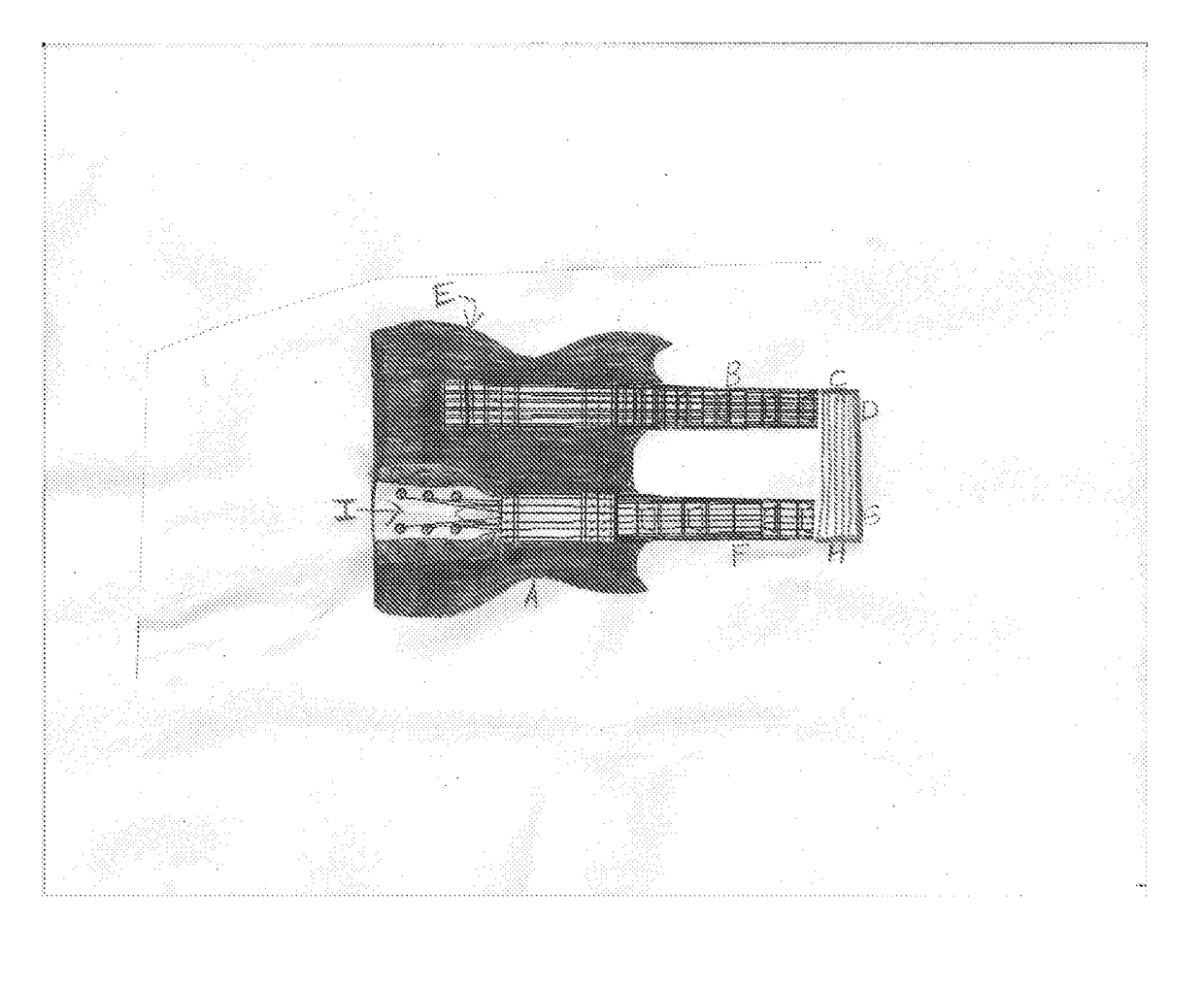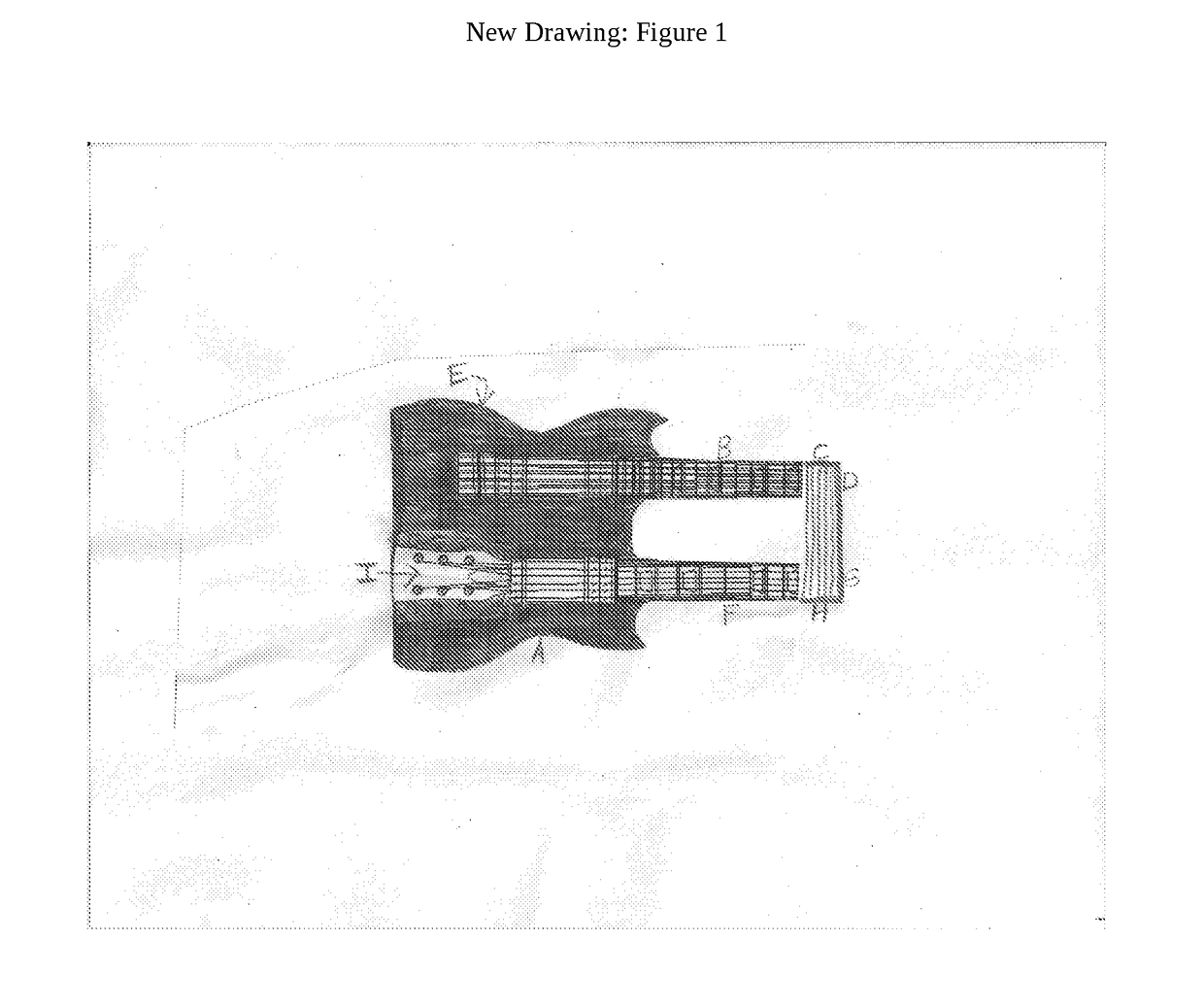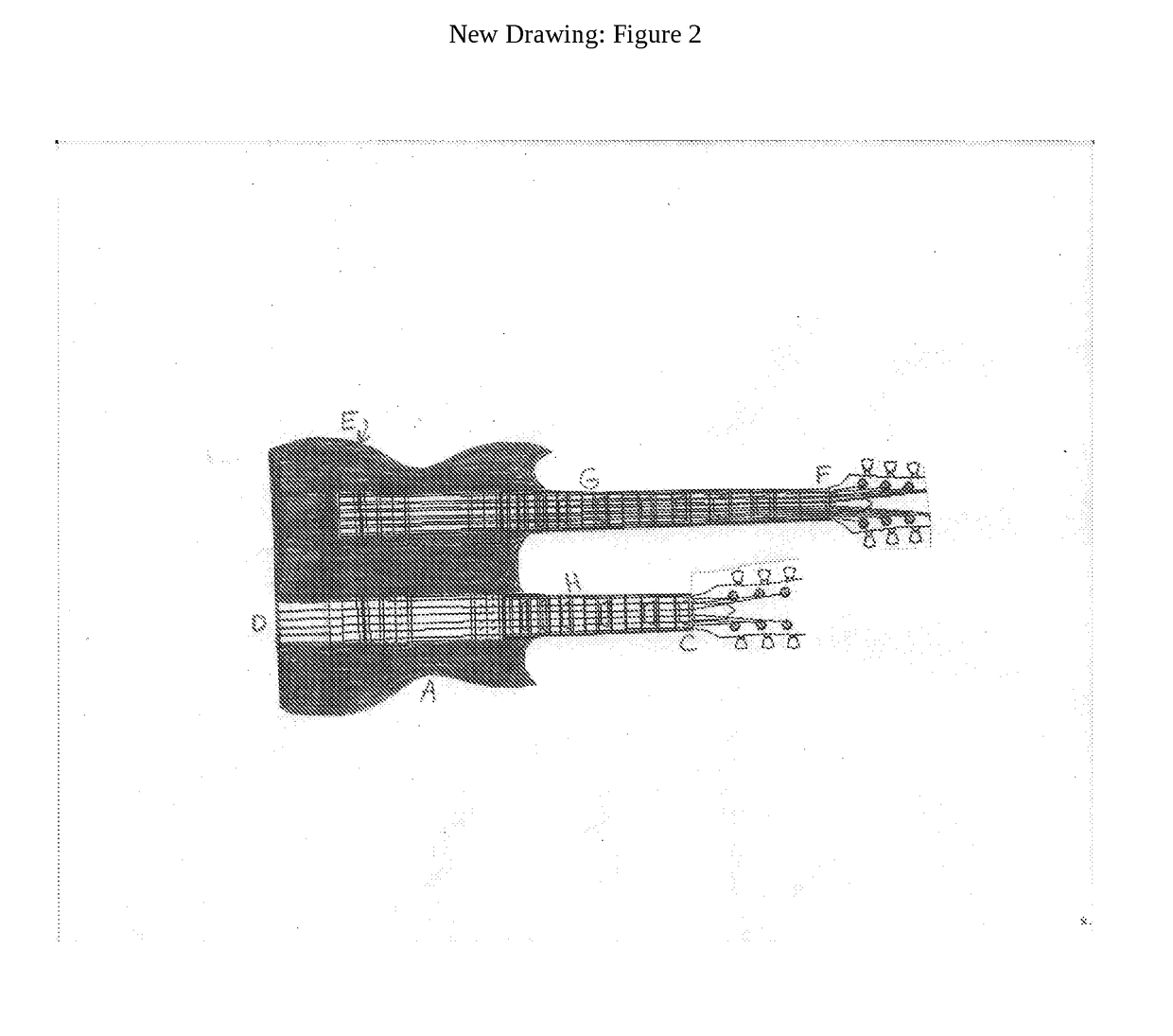Methods for Stringed Instrument Construction
a stringed instrument and construction technology, applied in the field of stringed instruments, can solve the problems of difficult to reach the lower notes of the fretboard, pain in the arm and shoulder of the musician, and difficulty in reaching outward, so as to achieve easy to reach all parts of the fingerboard, easy to hold, and easy to play for long periods
- Summary
- Abstract
- Description
- Claims
- Application Information
AI Technical Summary
Benefits of technology
Problems solved by technology
Method used
Image
Examples
Embodiment Construction
[0010]The Invention is designed so that it is comfortable to hold and easy to play for long periods of time without becoming fatigued. The invention allows the musician to easily reach all parts of the fingerboard with an instrument with a regular scale length.
[0011]The invention utilizes two necks in a style that appears similar to a double neck guitar. [1] The top neck is normal length and is meant to be used to play the higher notes of the scale, which are naturally easy to reach, being closer to the musician's body. The musician has the option to play the lower notes on this neck as well. To make the lower notes easier to reach, another, shorter neck is located just below the top neck. In one variation of the invention the bottom neck is one half the size of a regular neck, while in another variation the bottom neck is placed further up the body horizontally, and is either regular length or three quarters length. In both cases the neck serves to make the lower frets closer to th...
PUM
 Login to View More
Login to View More Abstract
Description
Claims
Application Information
 Login to View More
Login to View More - R&D
- Intellectual Property
- Life Sciences
- Materials
- Tech Scout
- Unparalleled Data Quality
- Higher Quality Content
- 60% Fewer Hallucinations
Browse by: Latest US Patents, China's latest patents, Technical Efficacy Thesaurus, Application Domain, Technology Topic, Popular Technical Reports.
© 2025 PatSnap. All rights reserved.Legal|Privacy policy|Modern Slavery Act Transparency Statement|Sitemap|About US| Contact US: help@patsnap.com



